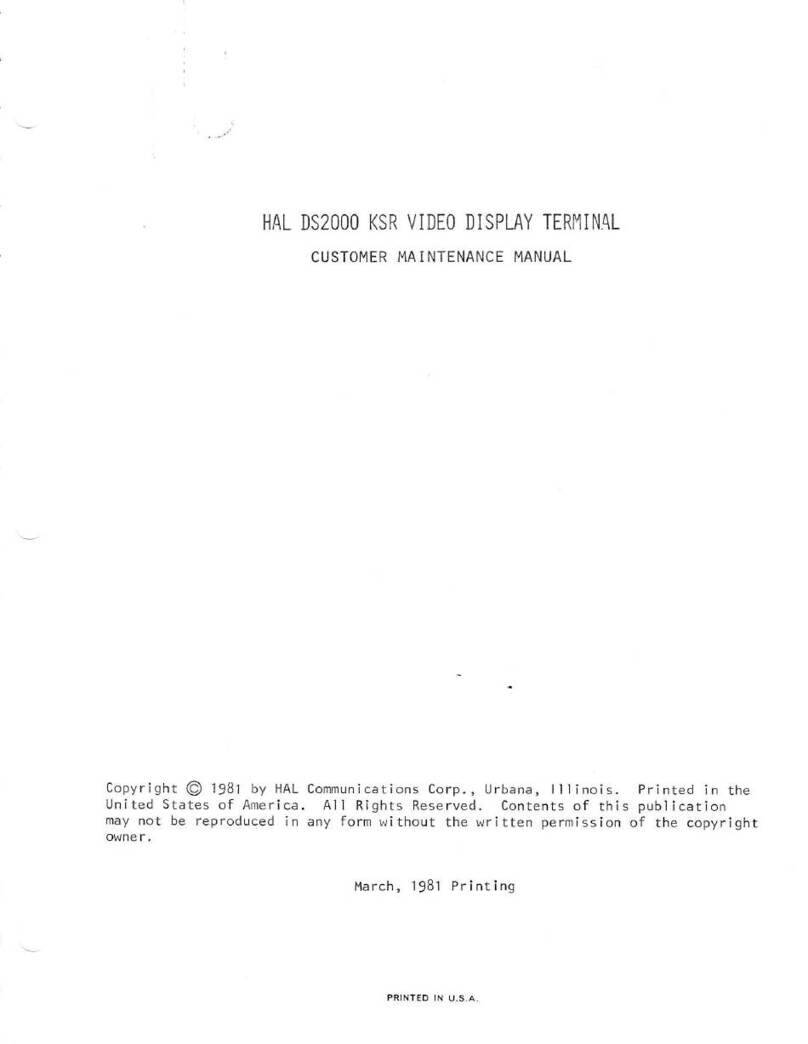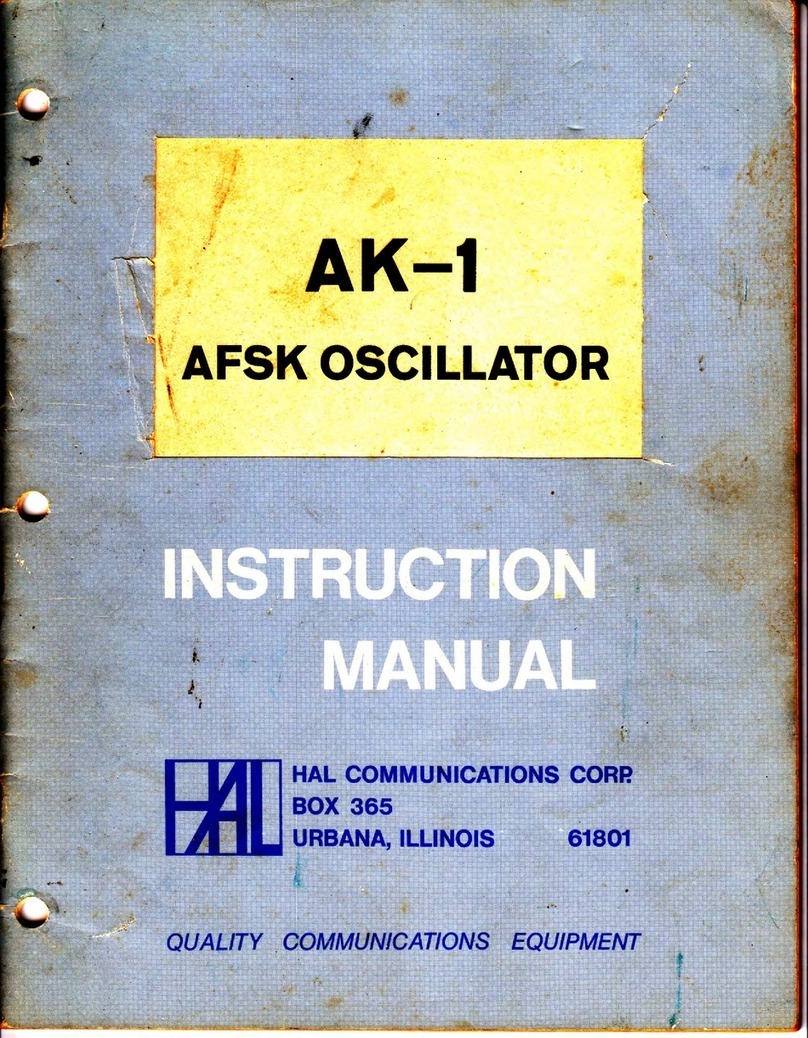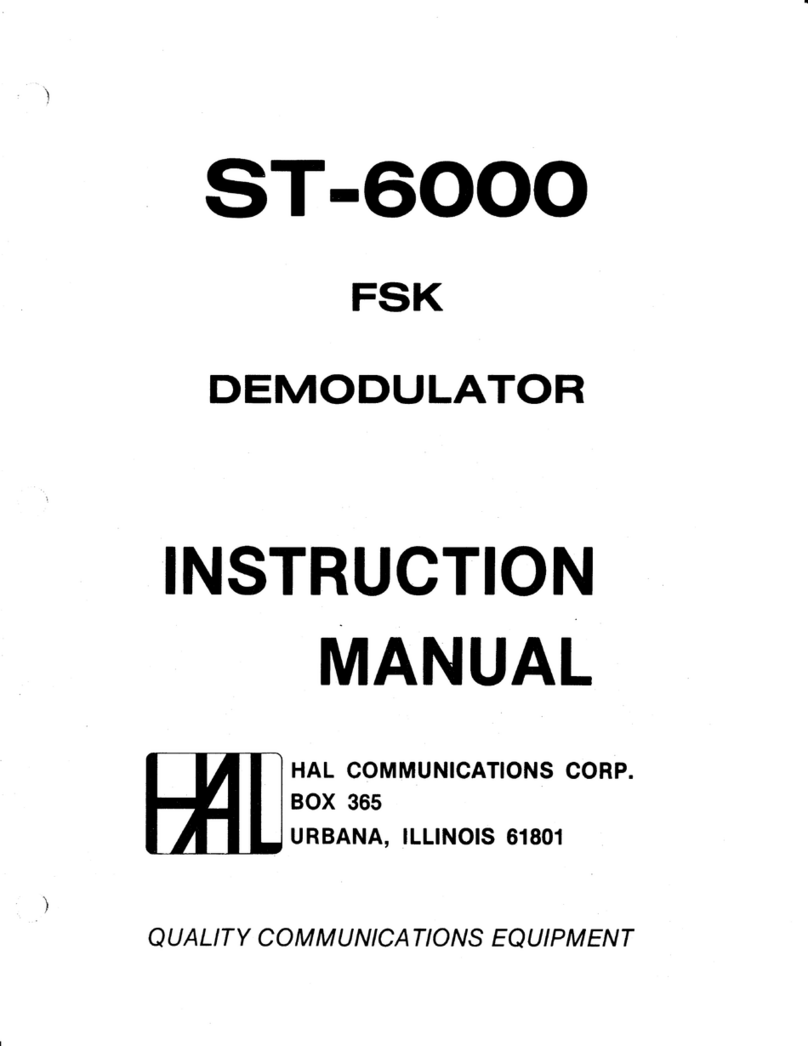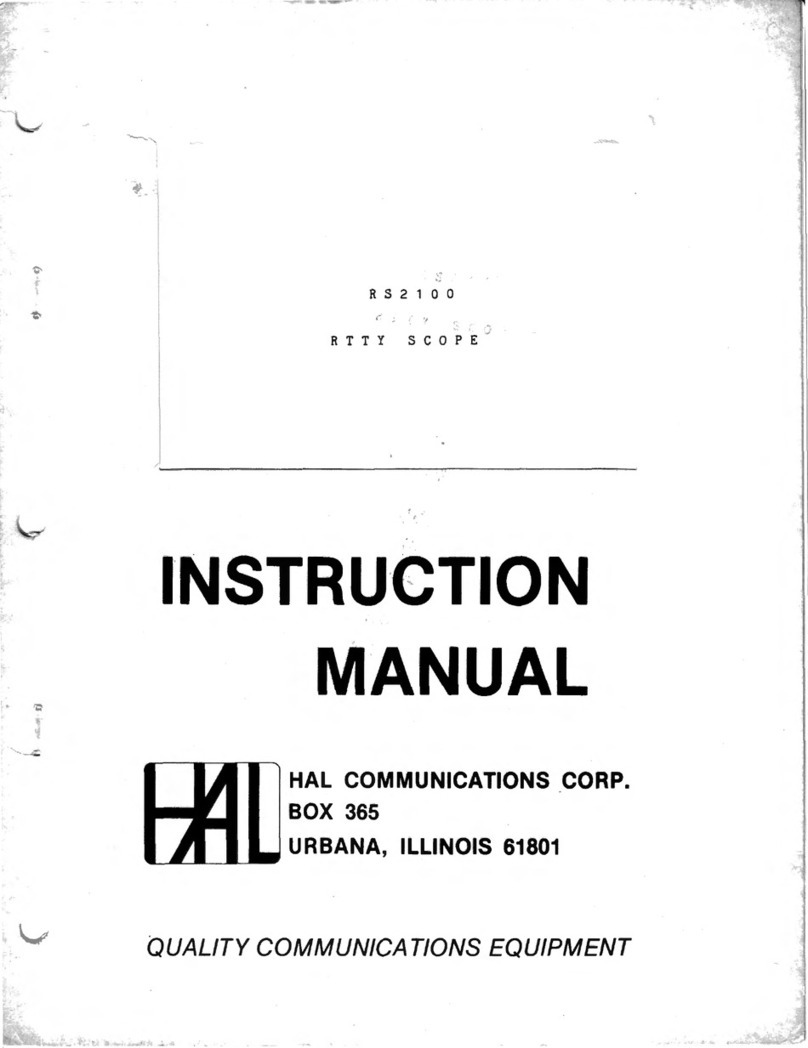
HAL
MCEM-8080
MICROCOMPUTER
SYSTEM
TECHNICAL
MANUAL
*************************************************************
WARRANTY
The
HAL
Communications Corp.
MCEM-8080
Microcomputer System
is
fully
guaranteed
against
defects
in
materials
and workmanship
for
a
period
of
one
year.
Should
repair
or
replacement
parts
be
required
t
notify
HAL
Communications
torp.
promptly.
Please
do
not
return
your
unit
to
the
factory
for
repair
or
adjustment
until
you have
received
a
written
return
authorization.
HAL
Communications assumes no
responsibility
for
the
repair
or
replace-
ment
of
parts
or
units
which have been damaged t
abused
t
improperly
installed
t
or
modified
and
reserves
the
right
to
change
the
design
of
this
equipment
without
incurring
obligation
to
incorporate
such
changes
into
existing
units.
Operation
of
this
equipment
with
improper
power
supply
voltages
(as
described
in
this
manual)
will
invalidate
the
warranty.
**************************************************************
Copyright
~
1976
by
HAL
Communications
Corp.t
Urbana,
Illinois.
Printed
in
the
United
States
of
America.
All
rights
reserved.
Contents
of
this
publication
may
not
be
reproduced
in any form
without
th~
written
permis-
sion
of
the
copyright
owner.
April,
1976
Printing































